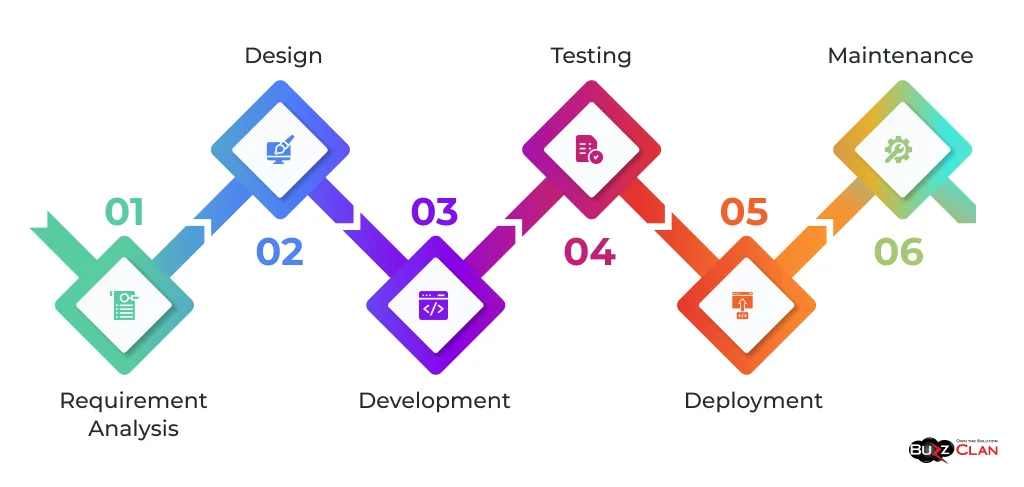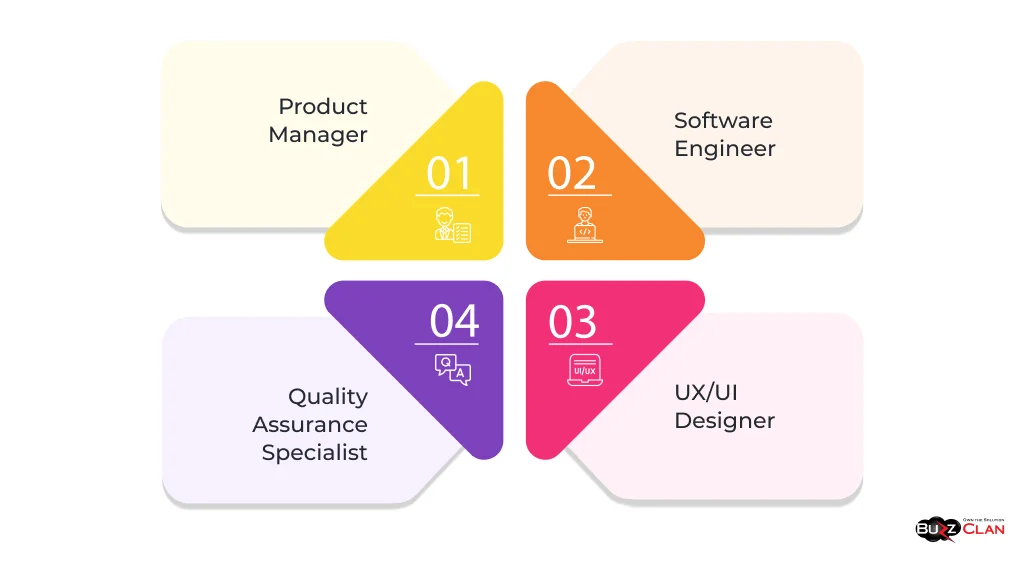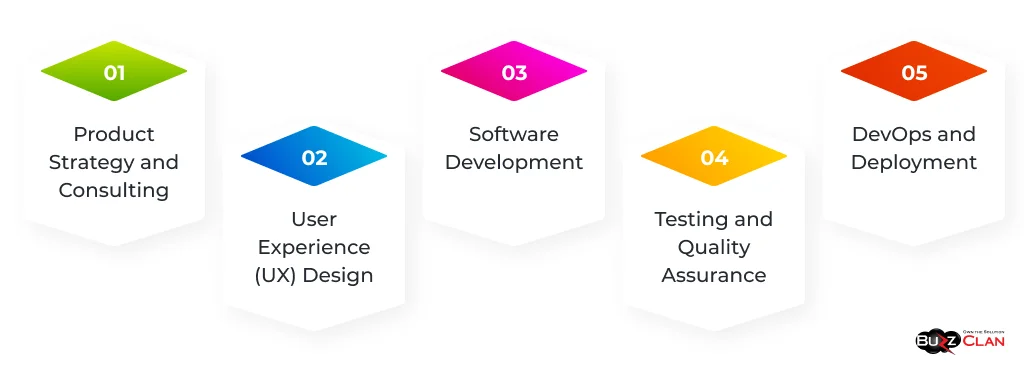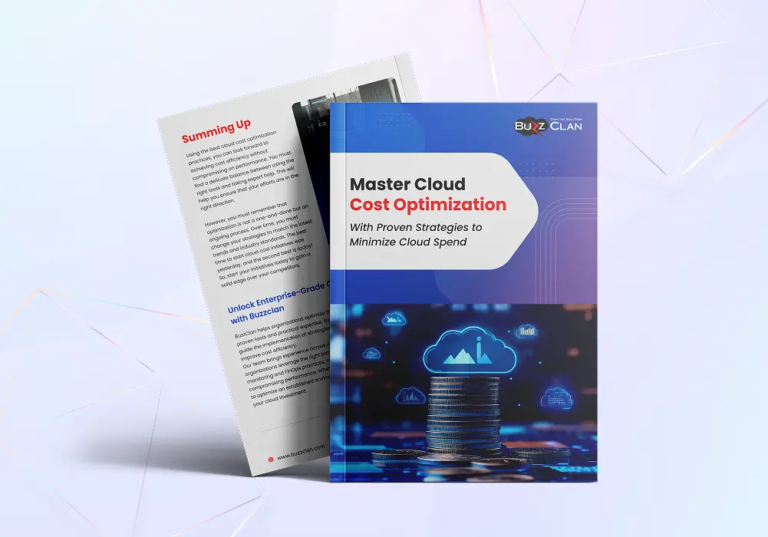Mastering Software Product Engineering: A Comprehensive Guide
Deepa Desai
May 9, 2024
Introduction
Software product engineering is a multidisciplinary approach that encompasses the entire lifecycle of a software product, from ideation and conceptualization to development, deployment, and maintenance. It goes beyond traditional software development by creating software solutions that align with business objectives, user needs, and market demands.
This comprehensive article will explore the world of software product engineering, its fundamental concepts, key stages, best practices, and the roles and responsibilities of professionals in this field. We will also compare software product engineering with traditional software engineering, discuss the benefits of leveraging expert product engineering services, and provide insights into the career prospects and future trends in this domain.
Whether you are a software engineer looking to transition into a product-focused role, a product manager seeking to enhance your technical understanding, or a business leader aiming to build successful software products, this article will equip you with the knowledge and insights necessary to navigate the exciting and transformative world of software product engineering.
Understanding Software Product Engineering
At its core, software product engineering is the process of designing, developing, and delivering software products that meet the needs of users and businesses. It involves a systematic approach to creating functional, reliable, scalable, and user-friendly software solutions.
The lifecycle of a software product encompasses several key stages, starting with ideation and conceptualization, where the product vision and requirements are defined. This is followed by the design phase, where the architecture and user interface of the product are crafted. The development phase involves the actual coding and implementation of the software, while the testing phase ensures that the product meets quality standards and functions as intended. Once the software is deployed, ongoing maintenance and updates address any issues and incorporate new features.
A software product engineer plays a pivotal role in this lifecycle, combining technical expertise, business acumen, and user empathy. They are responsible for translating business requirements into technical specifications, designing and implementing software solutions, and ensuring the successful delivery and maintenance of the product.
To excel in this role, a software product engineer must possess a multidisciplinary skill set, including proficiency in programming languages, software design principles, project management, and communication. They must have a deep understanding of the target market, user needs, and business objectives and be able to collaborate effectively with cross-functional teams, including designers, developers, and stakeholders.
Key Stages in Software Product Engineering
The software product engineering process consists of several key stages that form the backbone of successful product development. Let’s take a closer look at each of these stages:

- This stage involves gathering and analyzing the requirements for the software product, including functional and non-functional requirements, user needs, and business objectives.
- Product engineers work closely with stakeholders to understand their goals and translate them into clear and actionable requirements.
- In this stage, the architecture and user interface of the software product are designed based on the identified requirements.
- Product engineers collaborate with UX/UI designers to create wireframes, mockups, and prototypes that visualize the product’s functionality and user experience.
-
This stage involves coding and implementing the software product based on the design specifications.
-
Product engineers work with the development team to write clean, efficient, and maintainable code, following best practices and coding standards.
-
In this stage, the software product undergoes rigorous testing to ensure its quality, reliability, and performance.
- Product engineers work with quality assurance specialists to develop and execute test plans, identify and track bugs, and verify that the product meets the defined requirements.
- Once the software product has passed the testing phase, it is deployed to the production environment.
- Product engineers collaborate with DevOps teams to ensure smooth deployment and monitor the product’s performance in real-world scenarios.
- After deployment, ongoing maintenance and updates address issues, incorporate user feedback, and add new features and enhancements.
- Product engineers continuously monitor the product’s performance, gather user feedback, and prioritize maintenance tasks to ensure the product remains relevant and valuable.
It’s important to note that software product engineering is an iterative process, with feedback and insights from each stage informing and refining the subsequent stages. This iterative approach allows continuous improvement and adaptation based on user needs and market dynamics.
Roles in Software Product Engineering Team
A software product engineering team has diverse roles, each contributing unique skills and expertise to product development. Let’s explore the key roles and responsibilities within a software product engineering team

- Defines the product vision, strategy, and roadmap based on market research, user needs, and business objectives.
- Prioritizes features and requirements and collaborates with cross-functional teams to ensure successful product delivery.
- Communicates product value to stakeholders and makes data-driven decisions to optimize product performance.
-
Designs, develops and implements software solutions based on the defined requirements and architecture.
-
Writes clean, efficient, and maintainable code, following best practices and coding standards.
-
Collaborates with other engineers, designers, and quality assurance specialists to ensure the product’s technical excellence.
-
Crafts intuitive and visually appealing user interfaces that enhance the user experience.
-
Conducted user research, created wireframes and prototypes, and iterated on designs based on user feedback.
-
Collaborates with product managers and engineers to ensure seamless integration of design and functionality.
-
Develops and executes test plans to ensure the product meets quality standards and functions as intended.
-
Identifies and reports bugs and works with engineers to resolve issues and improve product reliability.
-
Conducts manual and automated testing to validate the product’s performance and user experience.
While these roles have distinct responsibilities, they often overlap and collaborate closely throughout product development. For example, product managers may have a technical background and provide input on engineering decisions, while software engineers may contribute to product strategy and user experience.
It’s also common for professionals to transition between these roles throughout their careers. Software engineers may move into product management roles to gain a broader perspective on product strategy and business objectives. In contrast, product managers may deepen their technical knowledge to understand engineering challenges and constraints better.
Best Practices in Software Product Engineering
To build successful software products that meet user needs and business objectives, product engineering teams must adhere to best practices that ensure efficiency, quality, and innovation. Let’s explore some of the key best practices in software product engineering

- Adopting agile methodologies, such as Scrum or Kanban, enables product engineering teams to work in short iterations, deliver value incrementally, and adapt to changing requirements and user feedback.
- Agile practices foster collaboration, transparency, and continuous improvement, allowing teams to deliver high-quality software products faster and flexibly.
- Implementing DevOps practices, such as continuous integration and continuous delivery (CI/CD), automates the software development and deployment processes, reducing manual errors and enabling faster release cycles.
- DevOps promotes collaboration between development and operations teams, ensuring smooth and reliable software delivery and reducing time to market.
- TDD is a software development approach in which tests are written before the actual code, ensuring that the code meets the defined requirements and behaves as expected.
- By writing tests first, product engineers can catch bugs early, improve code quality, and ensure that the software product is reliable and maintainable.
- Placing the user at the center of the product development process ensures that the software product meets the needs and expectations of its target audience.
-
User-centered design involves conducting user research, creating user personas, and continuously gathering user feedback to inform product decisions and improvements.
-
Embracing a culture of continuous improvement means constantly seeking opportunities to enhance the software product, optimize processes, and learn from failures.
-
Product engineering teams should regularly conduct retrospectives, gather user feedback, and analyze product metrics to identify areas for improvement and drive innovation.
By adopting these best practices, software product engineering teams can streamline their development processes, improve product quality, and more effectively deliver value to users and businesses.
Product Engineering vs. Software Engineering
While product engineering and software engineering are closely related, these two disciplines have some key differences. Let’s compare product engineering with traditional software engineering to highlight their distinct focus, scope, and end goals:
| Keys | Software Engineering | Product Engineering |
|---|---|---|
| Focus | Software engineering primarily focuses on the technical aspects of building software, such as designing, coding, testing, and maintaining software systems. | Product engineering, on the other hand, takes a more holistic approach, considering not only the technical aspects but also the business objectives, user needs, and market demands. |
| Scope | Software engineering typically involves developing software components, modules, or systems, often working on specific parts of a larger software product. | Product engineering encompasses the entire lifecycle of a software product, from ideation and conceptualization to development, deployment, and maintenance, taking into account the end-to-end user experience. |
| End Goals | The primary goal of software engineering is to build functional, reliable, and efficient software that meets the specified requirements. | Product engineering aims to create software products that meet technical requirements, deliver user value, solve real-world problems, and align with business objectives. |
It’s important to note that these differences are not absolute, and there is often significant overlap between software and product engineers’ roles and responsibilities. Many software engineers adopt a product-minded approach, considering user needs and business goals. In contrast, product engineers often have a strong technical foundation and contribute to the software development process.
Common misconceptions about the roles of product engineers versus software engineers include the notion that product engineers are solely focused on business and marketing. In contrast, software engineers are only concerned with coding. Both roles require a blend of technical expertise, business acumen, and user empathy to build successful software products.
Software Product Engineering Services
In today’s competitive tech landscape, many businesses leverage the expertise of software product engineering services to build and enhance their software products. These services offer a range of benefits, including access to skilled professionals, faster time to market, and cost-effectiveness.
Software product engineering providers offer comprehensive services covering the entire product development lifecycle. These services may include:

- Helping businesses define their product vision, strategy, and roadmap based on market research and user needs.
- Guiding technology choices, architecture design, and development methodologies.
-
Conducting user research and creating user-centered designs that enhance the product’s usability and visual appeal.
-
Developing wireframes, prototypes, and interactive mockups to validate design concepts and gather user feedback.
-
Build and implement software solutions using the latest technologies and best practices.
-
Providing a team of skilled software engineers, developers, and quality assurance specialists to handle the end-to-end development process.
-
Conducting thorough, functional, performance, and usability testing to ensure the product meets quality standards.
-
Implementing automated testing frameworks and continuous integration practices to catch bugs early and maintain product quality.
-
Setting up and managing the infrastructure and processes for continuous integration, delivery, and deployment.
-
Ensuring smooth and reliable software delivery, monitoring product performance, and providing ongoing support and maintenance.
By outsourcing software product engineering services, businesses can tap into a pool of experienced professionals with diverse skill sets and domain expertise. This allows them to accelerate their product development timelines, reduce costs associated with hiring and training in-house teams, and focus on their core business objectives.
When considering software product engineering services, businesses should evaluate the provider’s technical capabilities, industry experience, development methodologies, and track record of delivering successful software products. Building a strong partnership with a reputable service provider can be a game-changer in creating innovative and competitive software products.
Transitioning to a Product Mindset
Several key skills and mindset shifts are required for software engineers looking to transition into product-focused roles or embrace a product mindset. Let’s explore how software engineers can make this transition and become product-minded professionals:
- Gain a deep understanding of the business domain, market trends, and competitive landscape.
- Learn to align technical solutions with business objectives and customer needs.
- Develop skills in product strategy, market analysis, and financial planning.
-
Put yourself in the user’s shoes and prioritize their needs and pain points.
-
Collaborate with UX designers to create intuitive and engaging user interfaces.
-
Continuously gather user feedback and iterate on the product based on insights.
-
Build strong relationships with professionals from different disciplines, such as design, marketing, and sales.
-
Communicate technical concepts effectively to non-technical stakeholders.
-
Actively participate in product discussions and decision-making processes.
-
Leverage data and analytics to inform product decisions and measure success.
-
Define and track key performance indicators (KPIs) to assess product performance.
-
Use data insights to improve the product and continuously optimize user experience.
-
Develop a long-term vision for the product and align it with the company’s goals.
-
Prioritize features and initiatives based on their impact and feasibility.
-
Anticipate market trends and customer needs to stay ahead of the curve.
-
Embrace continuous learning and stay updated with industry trends and technologies.
-
Be open to feedback and adapt and iterate based on new insights.
-
Foster a culture of experimentation and innovation within the product team.
Transitioning from a software engineer to a product-minded professional requires a shift in perspective and acquiring new skills. It involves expanding one’s focus beyond the technical aspects of software development to consider the broader business context, user needs, and market dynamics.
Aspiring product managers or product-minded software engineers can benefit from seeking mentorship from experienced professionals, attending product management workshops and conferences, and gaining hands-on experience in product-focused roles. Building a strong foundation in technical and business skills is key to succeeding in software product engineering.
Salaries and Career Outlook
Software product engineering offers attractive salary prospects and career growth opportunities for professionals with the right skills and expertise. Let’s take a closer look at the financial and career prospects for product managers and software engineers:
- According to Glassdoor, the average base salary for a product manager in the United States is $108,992 per year, with salaries ranging from $75,000 to $150,000 or more.
- Product manager salaries influence experience level, company size, industry, and location.
- Senior product managers and product directors can earn significantly higher salaries, often exceeding $150,000 annually.
-
According to Glassdoor, the average base salary for a software engineer in the United States is $92,046 per year, with salaries ranging from $65,000 to $130,000 or more.
-
Factors that impact software engineer salaries include experience level, programming language expertise, company size, and location.
-
Senior software engineers and technical leads can earn salaries well above $130,000 per year, depending on their skills and responsibilities.
-
Product managers and software engineers have significant career growth and advancement opportunities.
-
Product managers can progress to senior product manager, product director, or even chief product officer (CPO) roles, taking on greater strategic responsibilities and leadership positions.
-
Software engineers can advance to senior software engineer, technical lead, or architect roles, focusing on technical leadership and mentorship.
-
Many professionals also transition between product management and software engineering roles, leveraging their diverse skill sets and experiences.
-
Salaries for product managers and software engineers vary significantly based on the industry and location.
-
Tech hubs like San Francisco, Seattle, and New York offer higher salaries due to the concentration of technology companies and the high cost of living.
-
Industries such as finance, healthcare, and e-commerce often offer competitive salaries for product managers and software engineers due to the high demand for technical talent.
It’s important to note that salaries and career prospects vary widely based on individual skills, experience, and performance. Professionals who continuously enhance their skills, stay updated with industry trends, and deliver value to their organizations are well-positioned for long-term career growth and financial success in software product engineering.
The Future of Software Product Engineering
As technology continues to evolve rapidly, the future of software product engineering is shaped by emerging trends and advancements that will redefine the responsibilities and methodologies of product engineers. Let’s explore some of the key trends that are likely to shape the future of software product engineering
- Integrating AI and ML technologies into software products will become increasingly prevalent, enabling intelligent and personalized user experiences.
- Product engineers will need to acquire skills in AI and ML to design and develop products that leverage these technologies effectively.
- AI-powered tools and platforms will assist product engineers in data analysis, predictive modeling, and automated testing tasks.
-
Serverless architectures, in which the cloud provider manages the infrastructure and scales resources automatically, will gain more adoption in software product engineering.
-
Product engineers will focus more on writing business logic and less on infrastructure management, leading to faster development cycles and increased agility.
-
Serverless technologies will enable product engineers to build scalable and cost-effective products without worrying about server provisioning and maintenance.
-
The rise of low-code and no-code platforms will democratize software product development, allowing non-technical professionals to create and customize software applications.
-
Product engineers will need to adapt to these platforms and find ways to integrate them into their development processes, leveraging their speed and ease of use while ensuring robust and secure implementations.
-
The role of product engineers may evolve to include more guidance, governance, and integration of low-code and no-code solutions into the overall product architecture.
-
Data-driven experimentation and continuous optimization will become integral parts of software product engineering, enabling teams to make informed decisions based on user behavior and product performance.
-
Product engineers will leverage techniques like A/B testing, feature flagging, and data analytics to improve the user experience and continuously optimize product features.
-
The ability to rapidly experiment, measure, and adapt will be crucial for product engineers to stay competitive and meet evolving user needs.
-
Adopting augmented reality (AR) and virtual reality (VR) technologies will create new opportunities and challenges for software product engineering.
-
Product engineers must develop skills in AR/VR development, 3D modeling, and spatial computing to create immersive and interactive user experiences.
-
Integrating AR/VR into software products will require product engineers to consider new design paradigms, performance optimization techniques, and user interaction patterns.
As these trends shape the future of software product engineering, product engineers must continuously adapt their skills, methodologies, and mindsets to stay relevant and drive innovation in the field. Learning quickly, embracing new technologies, and collaborating across disciplines will be essential for success in this evolving landscape.
Case Studies and Real-World Examples
To illustrate the impact and success of software product engineering in real-world scenarios, let’s explore a few case studies and examples of well-known software products that have exemplified strong product engineering principles
- Spotify, the popular music streaming platform, has successfully leveraged software product engineering to create a seamless and personalized user experience.
- Spotify’s product engineers have developed features like personalized playlists, song recommendations, and social sharing capabilities through data-driven insights, user research, and continuous experimentation.
- Spotify’s product engineering team has also focused on scalability and performance, ensuring the platform can handle millions concurrent users and deliver high-quality audio streaming.
- Airbnb, the online marketplace for short-term rentals, has built a robust software product that connects hosts and travelers worldwide.
- Airbnb’s product engineering team has focused on creating a user-friendly and trustworthy platform with features like detailed listing information, user reviews, and secure payment processing.
- Through continuous iteration and user feedback, Airbnb’s product engineers have optimized the search and booking process, making it easy for users to find and book unique accommodations.
-
Slack, the team collaboration and messaging platform, has revolutionized workplace communication through its intuitive and feature-rich software product.
-
Slack’s product engineering team has prioritized user experience with a clean and customizable interface, seamless integrations with third-party tools, and powerful search and notification capabilities.
-
By constantly iterating based on user feedback and usage patterns, Slack’s product engineers have created a platform that enhances productivity and streamlines communication for teams of all sizes.
These case studies demonstrate how effective software product engineering can lead to the creation of successful and impactful software products. By prioritizing user needs, leveraging data insights, and continuously iterating and improving, these companies have built products that have transformed their respective industries and garnered loyal user bases.
Analyzing the role of product engineering in the success of these software applications reveals common themes, such as a focus on user-centered design, data-driven decision-making, and a commitment to continuous improvement. These examples inspire aspiring product engineers and highlight the importance of strong product engineering principles in building software products that solve real-world problems and deliver user value.
Conclusion
In today’s fast-paced and technology-driven world, software product engineering has emerged as a critical discipline that bridges the gap between technical excellence and business success. As we have explored throughout this article, software product engineering encompasses a wide range of skills, processes, and best practices that enable the creation of software products that meet user needs, align with business objectives, and drive innovation.
From understanding the essence of software product engineering and its key stages to exploring the diverse roles within a product engineering team and the best practices that guide their work, we have gained a comprehensive understanding of what it takes to build successful software products.
We have seen how software product engineering differs from traditional software engineering. It focuses on the entire product lifecycle and aligns technical solutions with business goals and user needs. We have also explored the benefits of leveraging expert software product engineering services and the opportunities for software engineers to transition into product-focused roles.
Looking ahead, the future of software product engineering is shaped by emerging trends such as artificial intelligence, serverless computing, low-code platforms, continuous experimentation, and augmented reality. These advancements present challenges and opportunities for product engineers to adapt their skills, methodologies, and mindsets to stay at the forefront of innovation.
The real-world examples and case studies we have examined demonstrate the tangible impact of effective software product engineering on the success of well-known software products. These examples inspire aspiring product engineers and highlight the importance of user-centered design, data-driven decision-making, and continuous improvement in building products that transform industries and delight users.
FAQs

Get In Touch
Follow Us

Get In Touch
Follow Us
Table of Contents
- Introduction
- Understanding Software Product Engineering
- Key Stages in Software Product Engineering
- Roles in Software Product Engineering Team
- Best Practices in Software Product Engineering
- Product Engineering vs. Software Engineering
- Software Product Engineering Services
- Transitioning to a Product Mindset
- Salaries and Career Outlook
- The Future of Software Product Engineering
- Case Studies and Real-World Examples
- Conclusion
- FAQs








